Garlic Bread Loaf
A richly soft bread loaf made with milk, egg, sugar, oil, and garlic.
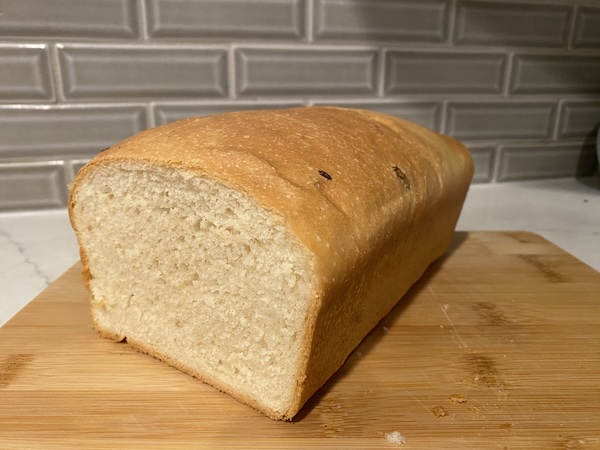 I’m not sure what possessed me to add garlic to my milk loaf recipe. I had obvious reservations, the primary one of course being my breath, and my secondary reservation being the versatility of such a bread. But doubt and fear are the enemy of creativity. So I put my reservations aside, chopped up some garlic, fried with some olive oil, and created a tasty bread that works great with butter (garlic bread!) and sandwiches.
I’m not sure what possessed me to add garlic to my milk loaf recipe. I had obvious reservations, the primary one of course being my breath, and my secondary reservation being the versatility of such a bread. But doubt and fear are the enemy of creativity. So I put my reservations aside, chopped up some garlic, fried with some olive oil, and created a tasty bread that works great with butter (garlic bread!) and sandwiches.
How Claude AI Became My JIRA Assistant
My experience using Claude as my JIRA assistant and how he has improved the quality of our user stories and bug tasks.
I recently anointed Claude as my new JIRA assistant. As I am also a manager he is by extension my team’s JIRA assistant. I’ve learned that he is a pretty damn good one at that. This blog post is to highlight how I’ve been using Claude as my JIRA assistant, how I’ve incorporated him into my processes, and how I’d like to use him in the future.
First some context with one of my team’s struggles: user stories and acceptance criteria. This has been a persistent challenge for my team. Our stories rarely follow any set of principles to emphasize quality such as INVEST. Instead they are pithy two sentence descriptions that assume a deep knowledge of the products, underlying software, and existing architectural definciencies. In an effort to increase story quality I’ve employed Claude as my JIRA assistant. So far he’s kept me honest when creating tasks and I’m hoping he also keeps my team honest in the future. Here are some lessons I’ve learned so far.
Blackberry Prison Juice Cider
Recipe: Dry Cider. Fermentables: Blackerries, SunRype Apple Juice. Yeast: SafCider AB-1. BJCP Style: C1A. Common Cider.
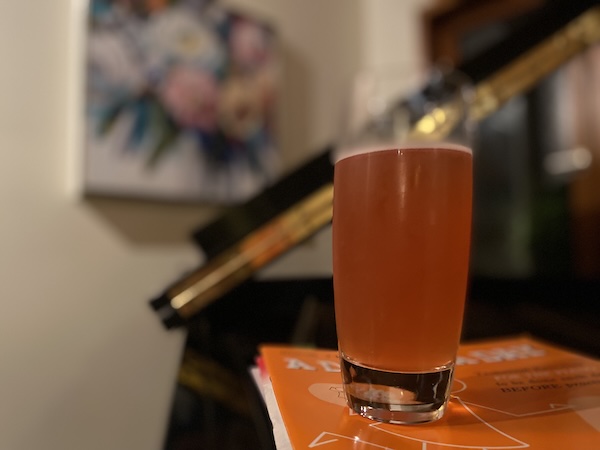 This is a fancy version of my prison juice cider recipe. With blackberries in season, I decided to experiment using fruit puree in this cider with fresh berries. The colour did not disappoint: perfectly pink with a purple hue. As it aged the colour took on more orange. Unfortunately, the blackberries don’t feature prominently in the taste. But it did offer a bit more depth of flavour than store bought apple juice provides and is a fun regional and seasonal variation to an otherwise boring recipe.
This is a fancy version of my prison juice cider recipe. With blackberries in season, I decided to experiment using fruit puree in this cider with fresh berries. The colour did not disappoint: perfectly pink with a purple hue. As it aged the colour took on more orange. Unfortunately, the blackberries don’t feature prominently in the taste. But it did offer a bit more depth of flavour than store bought apple juice provides and is a fun regional and seasonal variation to an otherwise boring recipe.
Home Coffee Roasting: Learning to Crawl
In this post I expound my new love for home coffee roasting and document my beginner method for roasting consistent coffee beans at home.
 For the same reason I brew beer, bake bread, and shave with a straight razor, I recently started roasting coffee at home: to better understand, ritualize, and perfect the otherwise mundane things in my life. I don’t know why I have this need to iterate, document, and improve. It could be in me innately. It could have been learned from a career in software. Whatever the reason, I feel compelled to understand coffee from an artisan perspective and blog about this journey along the way. Much like homebrewing, the home coffee roasting scene is mature and there is all manner of coffee roasting equipment available across a wide range of price points. There is also a dizzying amount of information available. Because of that I’m utilizing a “crawl, walk, run” learning method to ensure I don’t have too many levers and adjustments available to me.
For the same reason I brew beer, bake bread, and shave with a straight razor, I recently started roasting coffee at home: to better understand, ritualize, and perfect the otherwise mundane things in my life. I don’t know why I have this need to iterate, document, and improve. It could be in me innately. It could have been learned from a career in software. Whatever the reason, I feel compelled to understand coffee from an artisan perspective and blog about this journey along the way. Much like homebrewing, the home coffee roasting scene is mature and there is all manner of coffee roasting equipment available across a wide range of price points. There is also a dizzying amount of information available. Because of that I’m utilizing a “crawl, walk, run” learning method to ensure I don’t have too many levers and adjustments available to me.
A promenade with Q. Building a social share toolbar.
Explorations in Prompt Engineering and Artificial Intelligence. This post is attempt number 2 asking Q to add a social share toolbar to my blog and evaluate its decisions.
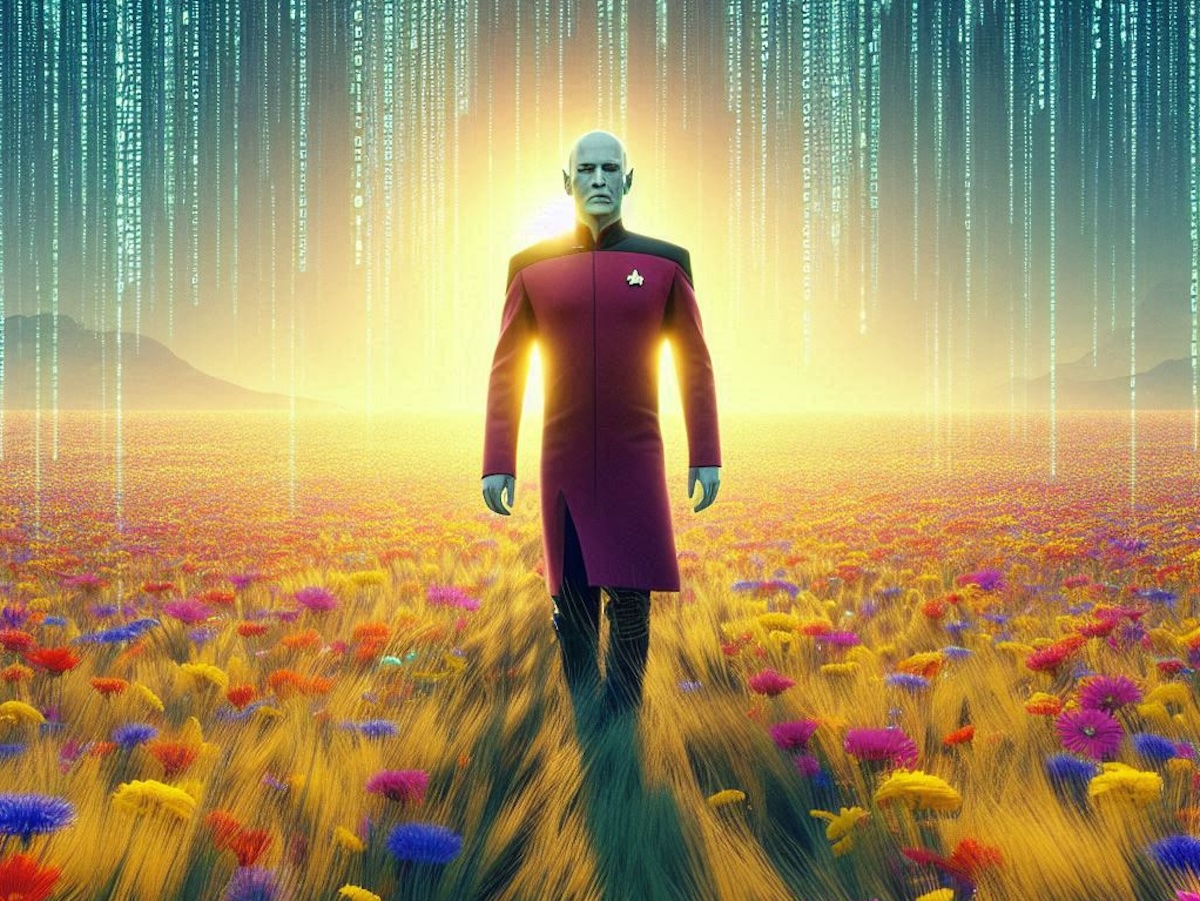 This post is part 2 of using AI to add a social media share toolbar to each post in this blog. My first attempt getting Q to build a social share toolbar was successful, but an architectural disaster. Instead of being specific about what I wanted, Q was given a long leash. Free to roam and intepret as it pleased, leading to less than ideal decisions. This time I walk Q hand-in-hand through the flowery meads to our final destination. I also arrive at an unexpectedly optimistic conclusion about Q and its potential.
This post is part 2 of using AI to add a social media share toolbar to each post in this blog. My first attempt getting Q to build a social share toolbar was successful, but an architectural disaster. Instead of being specific about what I wanted, Q was given a long leash. Free to roam and intepret as it pleased, leading to less than ideal decisions. This time I walk Q hand-in-hand through the flowery meads to our final destination. I also arrive at an unexpectedly optimistic conclusion about Q and its potential.
Britannia Mine Mill #2 - Canadian IPA
Recipe: Canadian IPA. Malts: Maris Otter, Munich, Black. Hops: Columbus (1oz), Fuggles (1oz), Goldings (1oz), and Willamette (3oz). Yeast: Imperial House. BJCP Style: 12C. English IPA.
 Britannia Mill #1 was built before the Britannia Mining and Smelting Compnay had a thorough understanding of how to efficiently process ore. It was also missing equipment required for efficient copper extraction. Fittingly my first attempt at this beer was brewed with an inappropriate yeast for an english ipa. At the time, Foggy London Ale from Escarpment was the only thing available to me and in a rare state of optimism I carried forth with a false hope that I could re-create Shotover Scholar with a NEIPA yeast strain.
Britannia Mill #1 was built before the Britannia Mining and Smelting Compnay had a thorough understanding of how to efficiently process ore. It was also missing equipment required for efficient copper extraction. Fittingly my first attempt at this beer was brewed with an inappropriate yeast for an english ipa. At the time, Foggy London Ale from Escarpment was the only thing available to me and in a rare state of optimism I carried forth with a false hope that I could re-create Shotover Scholar with a NEIPA yeast strain.
A dialogue with Q. Build a social share toolbar.
Explorations in Prompt Engineering and Artificial Intelligence. In this post I ask Q to add a social share toolbar to my blog and evaluate its decisions.
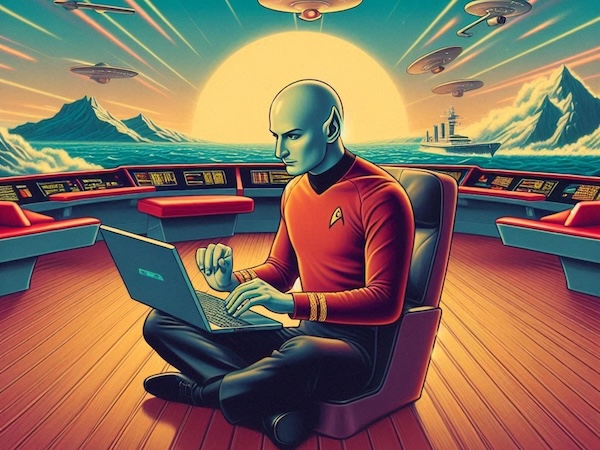 I’ve been using Q at work for non-programming related purposes with mixed success. Primarily I’ve treated Q as 1) a rubber duck 2) an internal search replacement and 3) document summary and content evaluator. I figured it was about time I evaluate it on its coding merits, so I’ve asked it to add a social media share toolbar to each blog post.
I’ve been using Q at work for non-programming related purposes with mixed success. Primarily I’ve treated Q as 1) a rubber duck 2) an internal search replacement and 3) document summary and content evaluator. I figured it was about time I evaluate it on its coding merits, so I’ve asked it to add a social media share toolbar to each blog post.
First the prompt:
Create a “share this post” toolbar that displays on top of each page that allows the visitor to share a post to facebook, X, reddit, and linkedIn. The share this post toolbar should be displayed in a horizontal toolbar above the post image.
Pinus Ananus Comosus IPA
Recipe: Cold IPA. Malts: Canadian Pilsner, Flaked Corn, Carapils. Hops: Columbus (0.5oz), Sabro (4oz), Cryo-pop (2oz). Yeast: Imperial L17. BJCP Style: 21B. Specialty IPA.
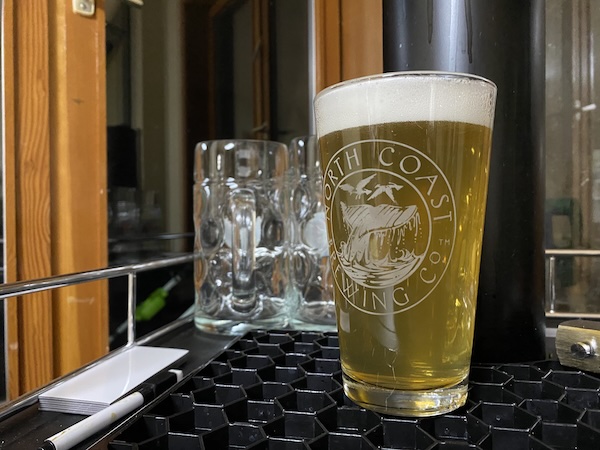 I’m not big on IPAs, especially the newer style IPAs that resemble pulped orange juice. Cold IPA, however, is a fantastic expression of the style: American pilsner and adjunct malts fermented with clean lager yeasts, combining to make a super clean canvas to let hops fully express themselves. I cooled and racked this beer directly onto an Imperial L17 harvest yeast cake that fermented my previous helles lager. At 64C it took no time at all to ferment. My planning for this beer wasn’t phenomenal, but the end result was a wonderfully drinkable 6% IPA with a strong dank and pine/cedar hop aroma that leads to a pine and pineapple finish.
I’m not big on IPAs, especially the newer style IPAs that resemble pulped orange juice. Cold IPA, however, is a fantastic expression of the style: American pilsner and adjunct malts fermented with clean lager yeasts, combining to make a super clean canvas to let hops fully express themselves. I cooled and racked this beer directly onto an Imperial L17 harvest yeast cake that fermented my previous helles lager. At 64C it took no time at all to ferment. My planning for this beer wasn’t phenomenal, but the end result was a wonderfully drinkable 6% IPA with a strong dank and pine/cedar hop aroma that leads to a pine and pineapple finish.
Reclaim the grain - in breads
An overview of using spent grains from brewing in breads, resulting characteristics imparted, and an example recipe.
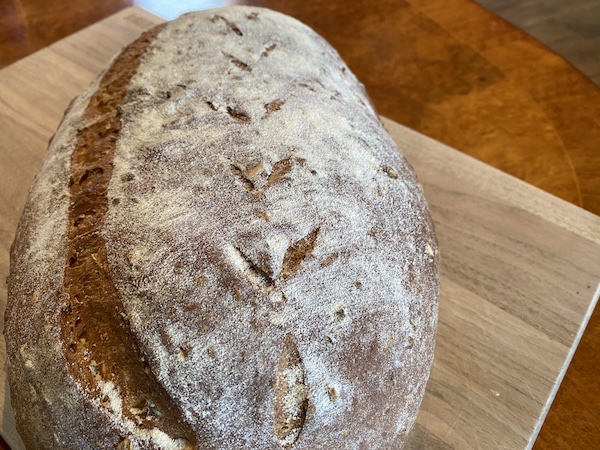 Deciding what to do with 5-6 kg of spent grains after a brewday is a bit of a problem. As I don’t want to encourage nearby mice/rats to make our house a home, I’ve been in the habit of bagging and freezing those grains, then leaving it out on the street on recycling day. Though I forget most weekends and the grains keep piling up. I ran out of space a couple months ago and since then have built a habit of incorporating those grains back into my baking. While I can’t use the whole 6 kg, I can repurpose about 10-15% of it back in my breads. It contributes a nutty flavour and chewy texture, turning simple white loaf recipes into hearty looking and tasting breads.
Deciding what to do with 5-6 kg of spent grains after a brewday is a bit of a problem. As I don’t want to encourage nearby mice/rats to make our house a home, I’ve been in the habit of bagging and freezing those grains, then leaving it out on the street on recycling day. Though I forget most weekends and the grains keep piling up. I ran out of space a couple months ago and since then have built a habit of incorporating those grains back into my baking. While I can’t use the whole 6 kg, I can repurpose about 10-15% of it back in my breads. It contributes a nutty flavour and chewy texture, turning simple white loaf recipes into hearty looking and tasting breads.
Gemütlichkeit Helles
Recipe: Munich Helles Lager. Malts: German Pilsner, Munich, Carapils. Hops: Hallertau (1.5oz). Yeast: Imperial L17. BJCP Style: 4A. Munich Helles.
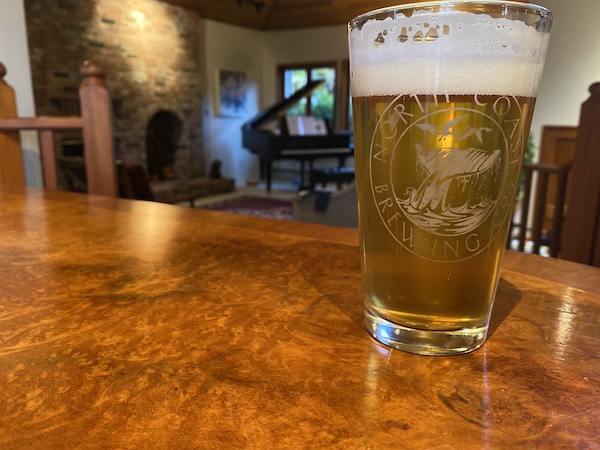 I forgot how much I love lagers. Like an idiot it’s been close to a year since I’ve made my last one. As penance I brewed a classic Munich Helles, and a super simple one at that. I love this style: nice malty flavours, perfume-y nose, and just enough bitterness to make me want to drink five. This particular beer was supposed to come in around 1.047 to ensure an abv of more than 5%, however I completely forgot that I only get around 70% efficiency with pilsner malt. No matter though as the yeast fermented the wort down to 1.008 and I still hit my 5%. The finished beer reminds of Budweiser, in a good way, with more German character.
I forgot how much I love lagers. Like an idiot it’s been close to a year since I’ve made my last one. As penance I brewed a classic Munich Helles, and a super simple one at that. I love this style: nice malty flavours, perfume-y nose, and just enough bitterness to make me want to drink five. This particular beer was supposed to come in around 1.047 to ensure an abv of more than 5%, however I completely forgot that I only get around 70% efficiency with pilsner malt. No matter though as the yeast fermented the wort down to 1.008 and I still hit my 5%. The finished beer reminds of Budweiser, in a good way, with more German character.